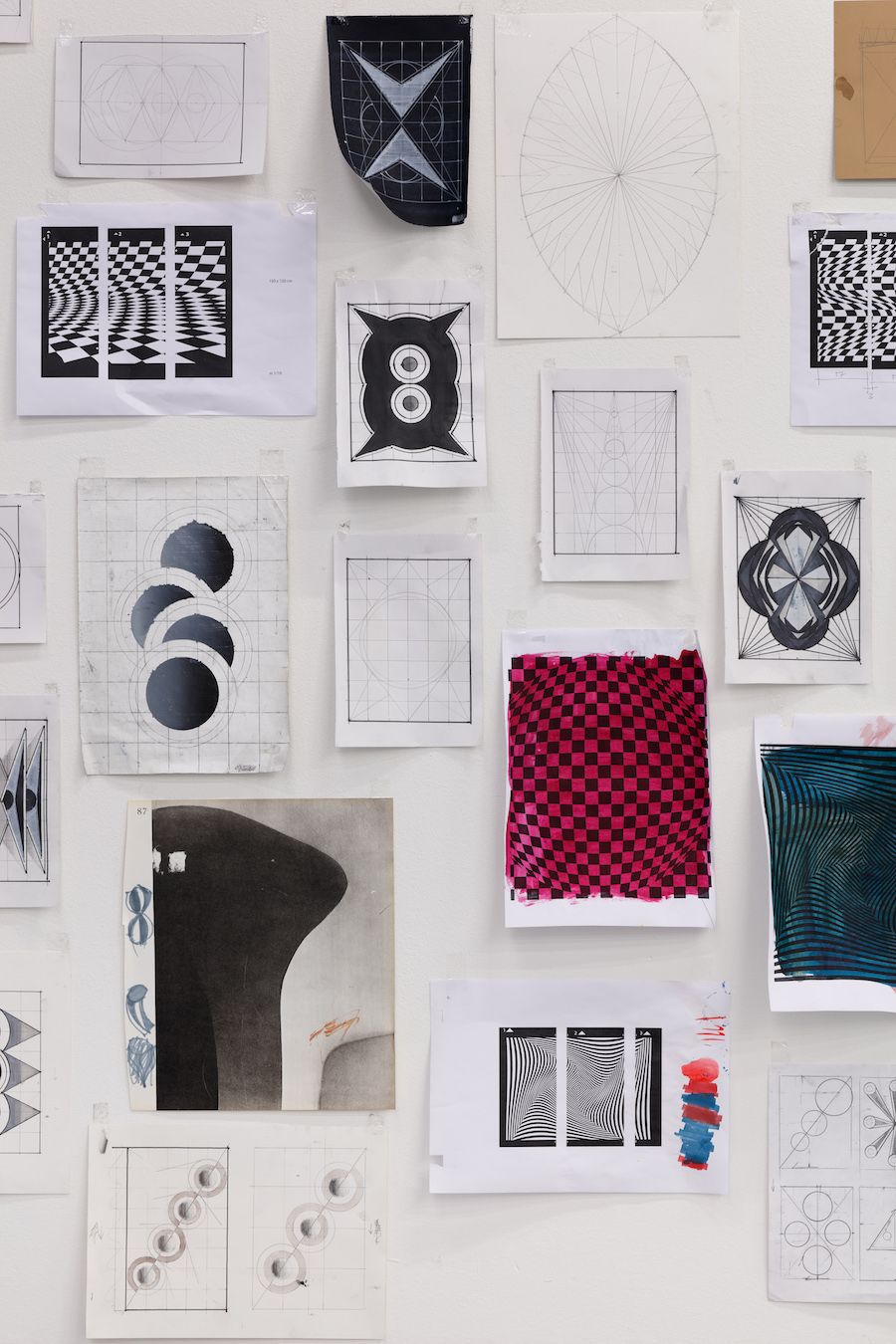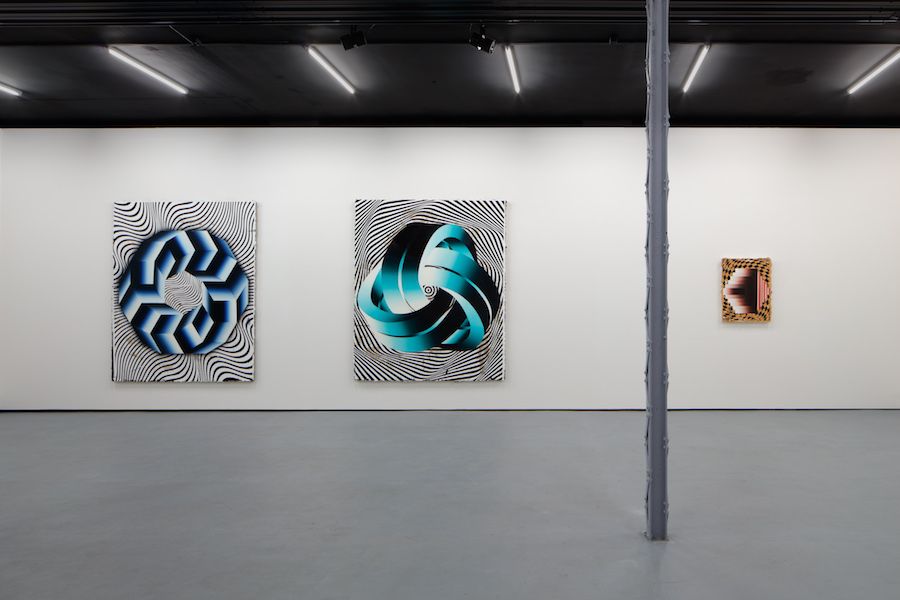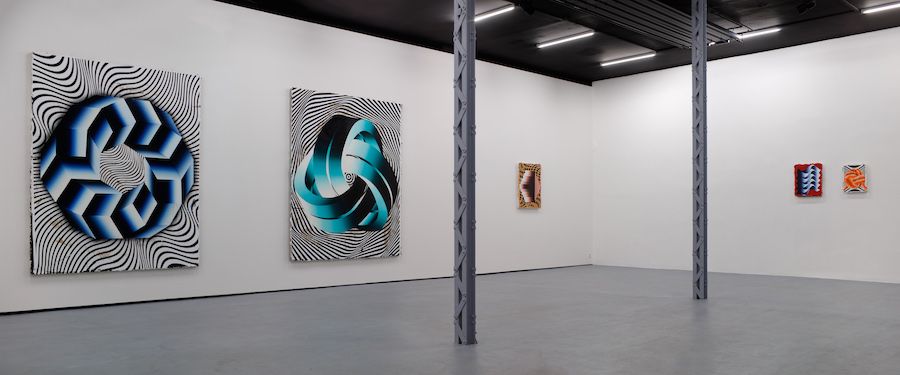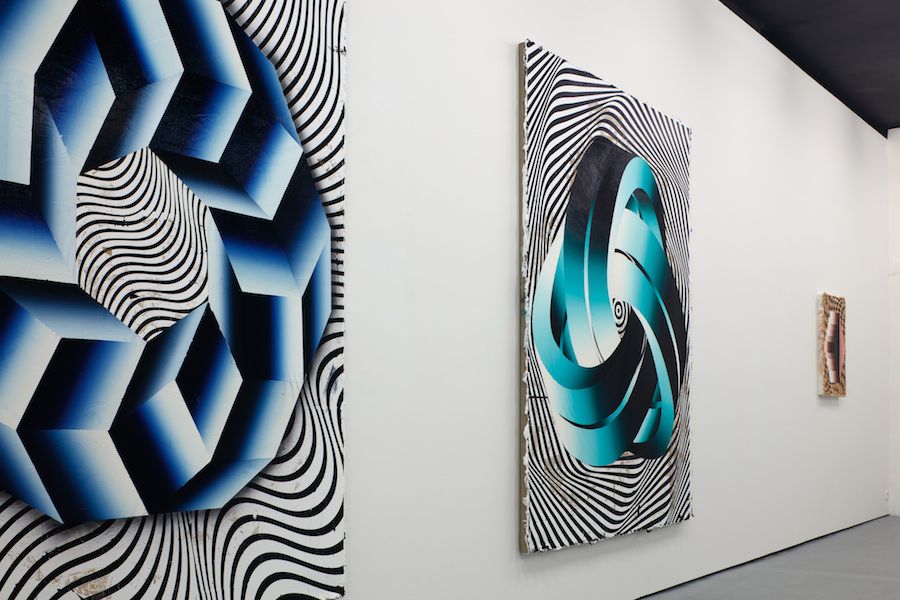Interaction
January 14, 2017 12:00 am - March 4, 2017 12:00 am Curator: Oliver Zybok Photos by: Polansky Gallery Polansky gallery, Veletržní, Prague 7-Holešovice, CzechiaBetween actual fact and factual fact
Both in conversations and in his written comments, Josef Albers frequently referred to a distinction that has taken on a great relevance for his artistic approach. He distinguished between the “psychological effect” and the “physical fact,” the “actual fact” and the “factual fact.” Art historian Max Imdahl pointed out that this assertion definitely connotes a universal character: “The factual facts apply to the physical substance, the actual facts on the other hand to the psycho-physiologically induced sensation.”
This oscillation between substance rand sensation has always characterised Vladimír Houdek’s work. Even if he has retained his painting technique of overlapping several colour – and thereby the sculptural quality of his works – he recently has not only expanded his geometrically oriented formal vocabulary, but also the palette of colours – from black and white to more richly contrasting variations. If his loops, fans, leporellos and screws for the most drift isolated throughout the pictorial space, the formal arrangements in the paintings that have arisen in the past year are more complex, they overlap each other and create new, super-ordinate, complex structures. Moreover, the monochrome background is increasingfly often replaced with patterns of, for instance, arched or compressed rhombs and squares reminiscent of surfaces in Op Art painting, such as in the early works of Bridget Riley. The surfaces generate optical irritations and move with even greater intensity within the field of spatial illusions. The deliberately chosen colours, those of the form constructs and of the background, richly contrast each other and intensify the illusory effect.
The interactions of form and colour are at the centre of Houdek’s interest. Interaction of Color (1963) is the title Albers gave to the comprehensive textbook on his explorations into colour – based to a considerable extent on the insights of Bauhaus masters Johannes Itten and Wassily Kandinsky. Albers distinguished in principle between fact and illusion. In terms of Houdek’s work this means: fact is when forms in various different colours are superimposed on each other in a set pattern. Illusion is when, in the interplay of colours, an impression is often created as if – should one imagine a spatial depth in the image – the individual forms drift along behind each other at greater or lesser distances. And it is precisely these modes of existence of colours and forms that Albers characterises as “actual fact” and “factual fact.” The purpose of this distinction is to underscore the conditionality of our perception, in other words the psychophysical effect of the colours in the context of forms. Here, our eye often succumbs to a sleight-of-hand, since the interplay of colours alters the effect. This mode of composition has always fascinated us – one might well speak of a downright passion for illusion, which Vladimír Houdek in a conversation once formulated in general terms: “Human beings have at all times been inclined to falsehood.”
Source text: Oliver Zybok / Polansky Gallery











